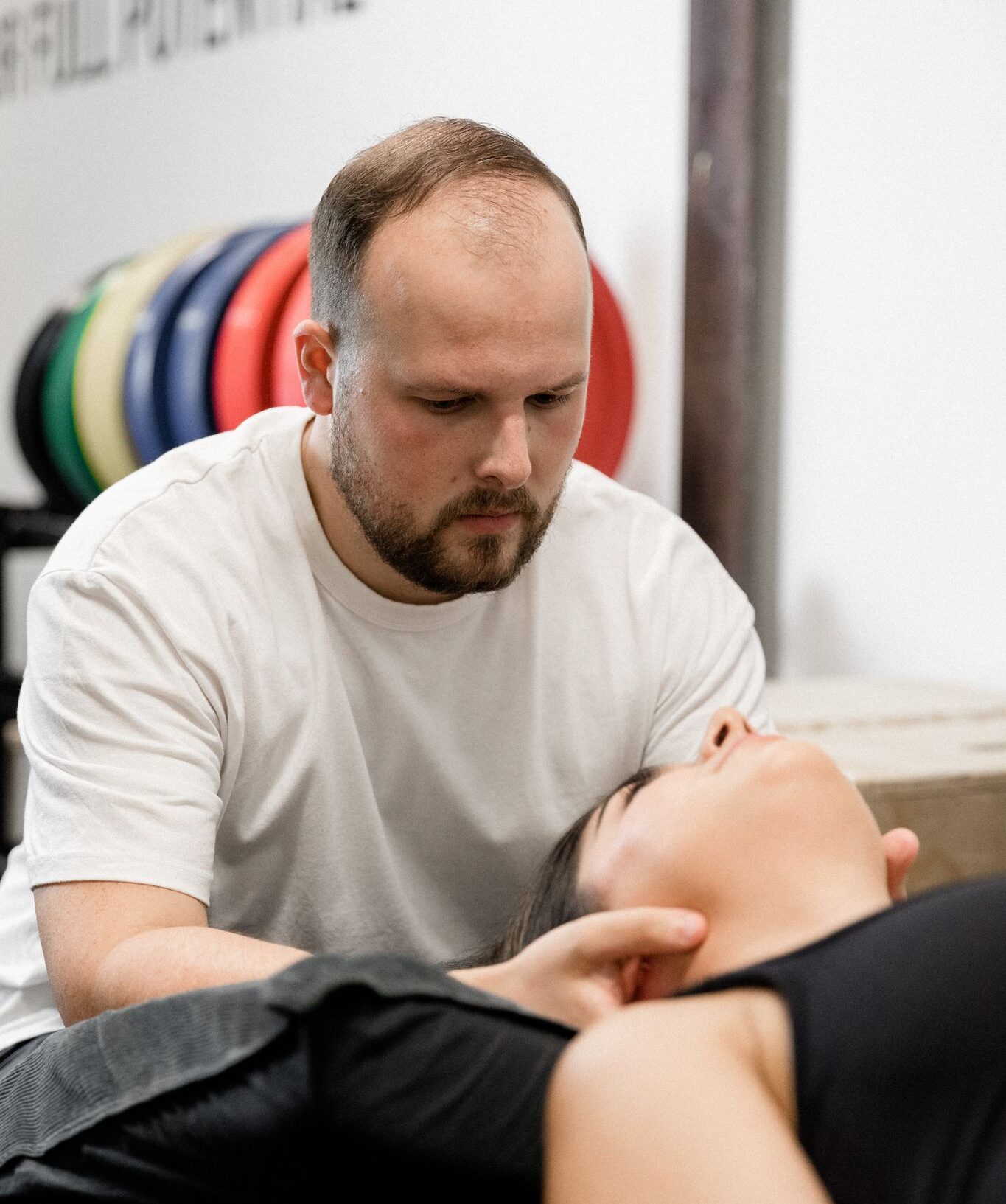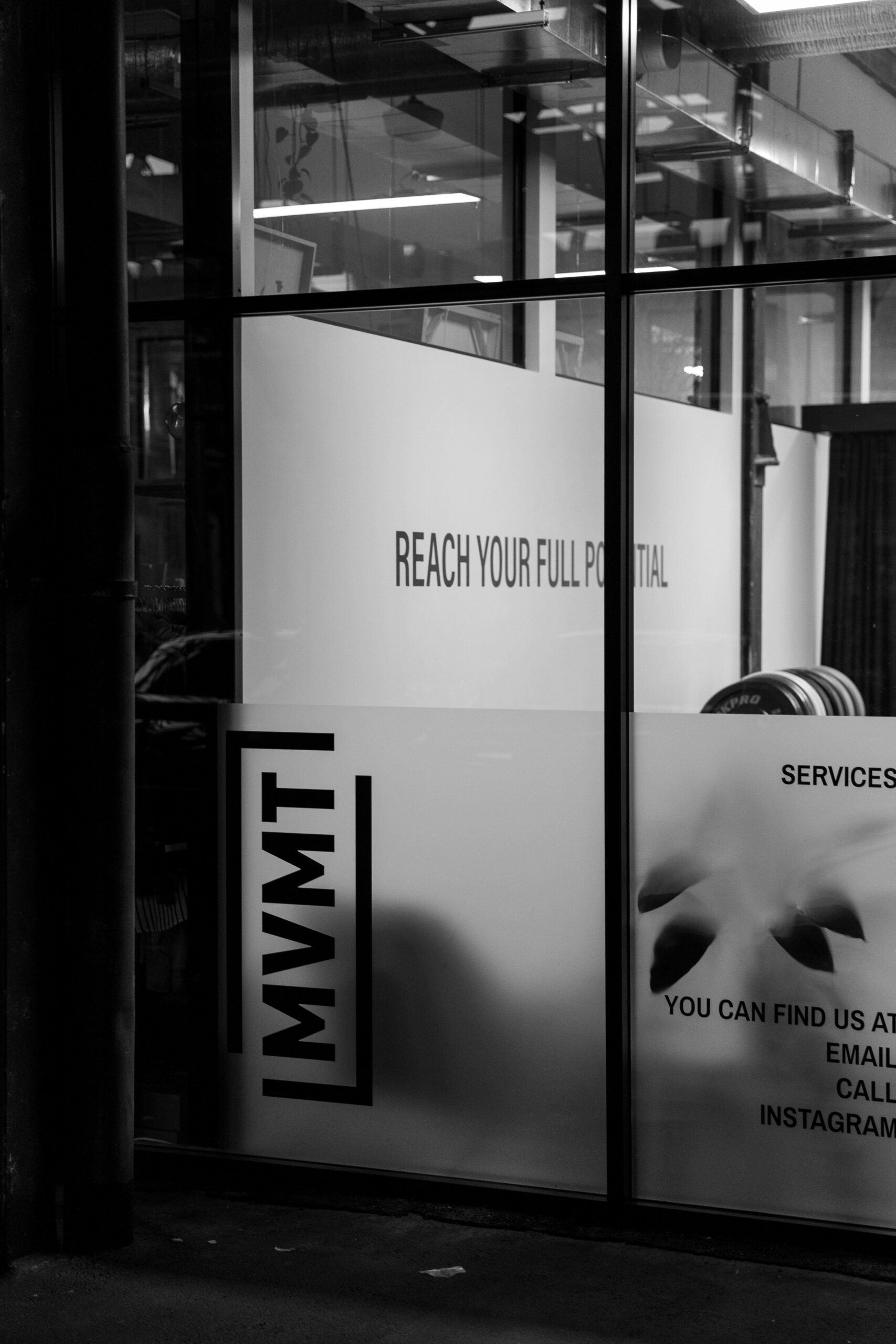Disc injuries
Are you experiencing intense pain in your back or neck and suspect you may have a slipped disc?
Schedule an Appointment
A slipped disc, also known as a herniated or bulging disc, is caused by the posterior or posterior-lateral migration of the nucleus pulposus due to a weakened fibrous ring.
Intervertebral discs are essential structures within the spinal structure, providing shock absorption between two vertebrae. Each disc is composed of a central element that is high in water content, called the nucleus pulposus, which is held in place by a fibrous cover. The nucleus pulposus changes its position within the disc as the spine moves, with the extension of the spine pushing it forwards, and an anterior flexion moving it backwards. This process can cause stress on the spinal disc if the body is subject to a sudden, heavy impact or through an extended period of incorrect posture, causing the nucleus pulposus to bulge out from the fibrous ring. When this happens, the fibrous ring, which has a high concentration of nerves, can be compressed causing pain.
In more severe cases, the fibrous ring can be torn, leading to the material inside leaking out and nerve symptoms into the arms or legs. Both the slipped and bulging disc can occur at different points along the spine, and their severity will vary depending on the specific location and the direction of the migration. It is important to establish the location and direction to ensure appropriate treatment, including the type and urgency required.
Cervical and lumbar disc treatment
A clinical examination is required to establish whether nerve compression is a factor, with symptoms including shooting pain, ongoing aching and a loss of muscle strength (myotome) as well as a difference in the cutaneous sensations of the affected area around the compressed nerve (dermatome). This is achieved through a series of orthopaedic, neurological and functional tests performed in-clinic. Further diagnostics may include CT Scans, MRI, or NCS (nerve Conduction Study) to accurately identify any neurological issues – however these are on a case-by-case basis and most patients are able to be accurately diagnosed with in-clinic testing.
For the vast majority of disc injuries, non-invasive treatment can alleviate the problem and reduce future incidence of flare-ups. Treatments commonly applied for disc injuries include myofascial release, dry needling, cupping, high-level laser therapy, joint mobilisation and extensive rehabilitation.
Our state-of-the-art high-level laser can deliver instant pain relief in as little as five minutes–aiding in the reduction of inflammation and repair of damaged tissue.
Working with you on disc pain
- Goals: Pain relief, improved mobility, better posture and become more functional.
- Problems: What are you experiencing? What is limiting you? How does this impact your life?
- Diagnosis: An in-depth diagnosis following a comprehensive history and examination including in-clinic orthopedic, neurological and functional assessments.
- Design: Your own personalised treatment plan. No one person is the same and you’re not a textbook. Our goal is to arm you with knowledge and awareness so you can better understand your body.
- Doing: Implementing of our modern treatment framework, which is designed to assist you in your recovery.

Disc injuries (Herniated Discs) FAQs
The most common types of disc injuries include:
- Disc herniation
- Disc tear
- Disc protrusion
- Disc extrusion
- Disc bulge
- Disc degeneration
- Annular tear
- Disc desiccation
- Sequestered disc
No matter your injury, our chiropractors can properly diagnose and provide an effective, tailored treatment plan to get you back into peak performance.
The time it takes to heal from a disc injury properly can range from a few weeks to a few months.
The body can naturally self-heal for minor injuries with sufficient self-care and time. However, with more severe injuries, we recommend booking a consultation with us so our chiropractors can properly assess and diagnose your injury.
A ruptured or herniated disc can take up to a few months to fully heal. The assistance from a tailored treatment plan can help improve the healing time and get you back to doing what you do best.
In most cases, walking can be highly beneficial for individuals with a disc injury. Walking can help improve blood circulation, muscle strength and flexibility.
In saying that, it is important that you consult with your chiropractor before undertaking any regular walking activities. Your chiropractor will help you develop a safe and effective exercise program that suits your condition.
If a ruptured disc is left untreated, it can cause severe permanent damage to nearby nerves. This may result in further damage, resulting in the need for surgery.
If you are experiencing herniated disc symptoms, we advise you to seek proper treatment immediately. Our experienced chiropractors can diagnose your disc injury and provide a tailored treatment plan to help prevent further damage.
Book an initial consultation with us today and let’s get you back to peak performance.
Let's Talk ...
Shop 3B/9 George St, North Strathfield NSW 2137
Monday - Wednesday 8am - 7pm
Thursday 8am - 8pm
Friday 8am - 5.30pm
Saturday 8am - 12pm


